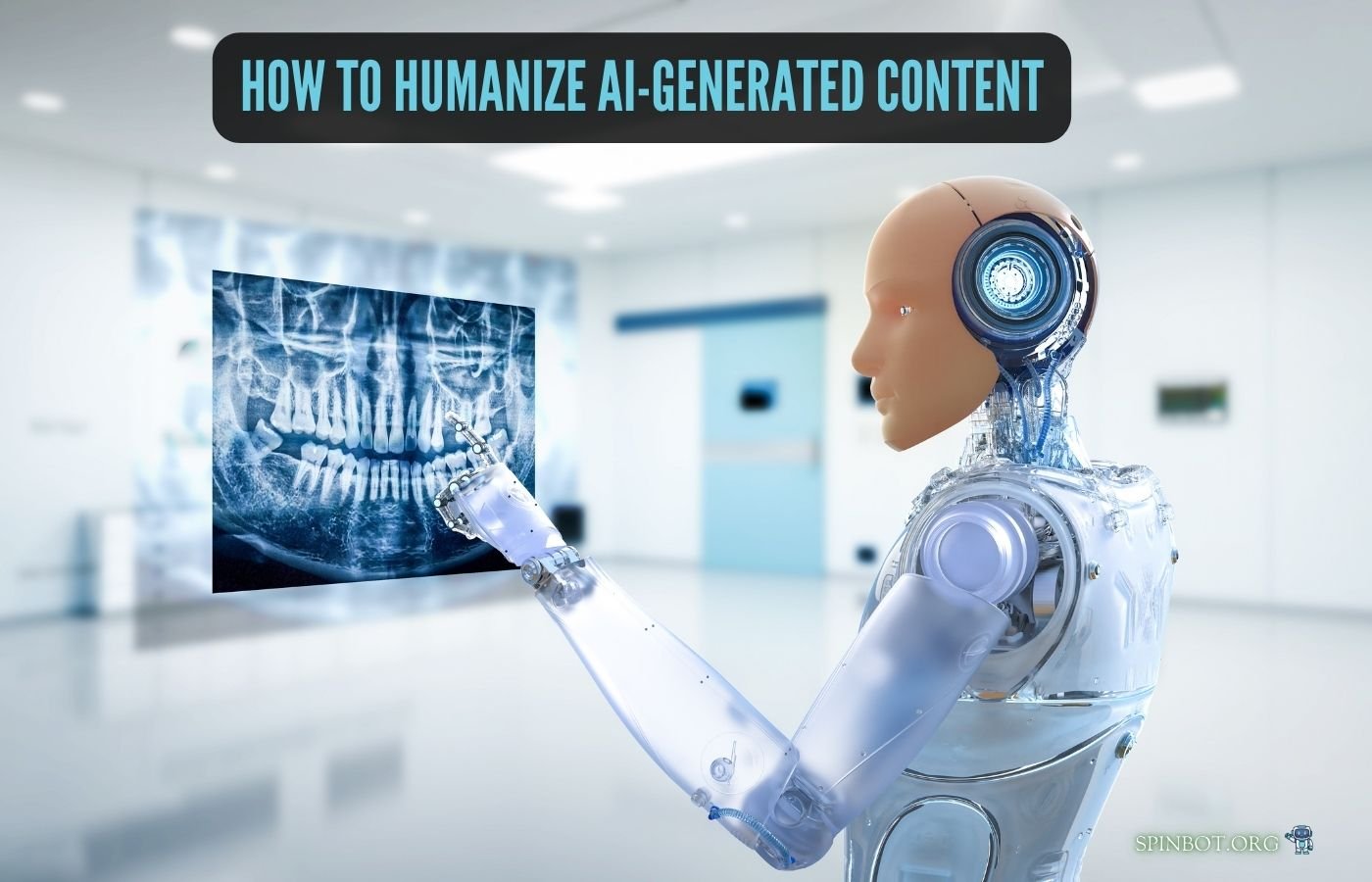Understanding AI-Generated Content
Before diving into how to humanize AI-generated content, it’s important to understand what AI content is and how it works.
AI-generated content is created using algorithms and natural language processing (NLP) technologies that analyze vast amounts of data to generate text. From articles and blogs to social media posts and product descriptions, AI tools are used to automate content creation at scale. These tools, such as GPT models, can quickly produce written content based on user inputs, making them an invaluable asset for businesses looking to streamline their marketing efforts.
However, while AI tools can generate content quickly, they often lack the human touch that makes writing feel engaging and authentic. This is where humanizing AI-generated content becomes essential.
The Challenges of AI-Generated Content
While AI has revolutionized content creation, it comes with certain challenges, especially when it comes to producing content that resonates with human readers. Here are some common problems:
Lack of Emotional Depth: AI-generated content often lacks the emotional connection that readers crave. It can be fact-heavy, impersonal, and devoid of empathy.
Monotony and Repetitiveness: AI can sometimes repeat phrases or use overly formal language, which makes the content sound robotic rather than conversational.
Unnatural Phrasing: Despite advancements in NLP, AI-generated content can still sound awkward or stilted. It may struggle with complex sentence structures, leading to a lack of natural flow.
To overcome these challenges, humanizing AI content is crucial.
Why Humanizing AI Content Matters
Humanizing AI-generated content is important because it helps bridge the gap between technology and human emotion. Content that feels human-like is more likely to engage your audience, evoke emotions, and foster trust. Here’s why it matters:
Improved Engagement: Content that sounds human resonates better with readers. It feels more relatable and trustworthy, encouraging users to interact with your brand.
Better Conversion Rates: Humanized content can drive more conversions because it creates an emotional connection with the reader, leading to better decision-making.
Enhanced Brand Voice: By humanizing AI-generated content, you ensure that your content aligns with your brand’s voice, making it more consistent and authentic.
Practical Strategies for Humanizing AI Content
Now that we understand the importance of humanizing AI-generated content, let’s dive into practical strategies that can help you make your AI output feel more like it was written by a human.
Use Natural Language and Conversational Tone
One of the key elements of humanized content is its ability to feel natural and conversational. AI-generated text can often come across as too formal or robotic, making it hard for readers to connect.
Write as You Speak: Use everyday language that your audience uses. Avoid jargon unless it’s necessary for your specific audience.
Include Contractions: Contractions (e.g., “can’t” instead of “cannot”) make the content feel more relaxed and less stiff.
Ask Questions: Engaging your readers with questions, like “Have you ever wondered…?” can help create a more interactive and conversational tone.
Infuse Emotion and Empathy
Humans respond to emotions, which is why infusing AI-generated content with emotional depth can make a huge difference. While AI tools can generate factual content, they often miss the emotional aspect that drives engagement.
Understand Your Audience’s Needs: Use empathy in your writing by addressing your audience’s pain points, desires, or struggles.
Add Personal Stories or Examples: Share real-life examples, case studies, or anecdotes that your readers can relate to. This helps humanize the content.
Use Emotionally-Engaging Language: Instead of dry, factual sentences, use words that evoke emotions. For example, instead of saying “Our product is effective,” say “Imagine how much easier your life will be with our product.”
Personalize Your Content
Personalization can transform AI-generated content into something unique and engaging. By tailoring content to your target audience, you make it feel more relatable and specific.
Segment Your Audience: Tailor your content based on the audience segment you are addressing. For example, a blog post about digital marketing will have a different tone and approach for beginners than for experts.
Use Data and Insights: Leverage customer data to create content that speaks directly to the needs and preferences of your audience. AI tools can analyze this data and help you create personalized content.
Add Humor and Wit (Where Appropriate)
Humor can go a long way in humanizing content. A touch of wit or light humor can make your writing feel more friendly and approachable.
Use Humor Sparingly: While humor can make content more engaging, overdoing it can make it seem forced. Use humor when it feels natural and relevant to your audience.
Be Authentic: The best humor feels natural and unscripted. Use humor that aligns with your brand personality and the tone of the content.
Avoid Overly Generic Content
Generic content is one of the easiest ways to make AI-generated content feel robotic. To humanize AI content, make sure it’s unique and tailored to your audience.
Be Specific: Use examples, statistics, or case studies to back up your claims. Avoid vague statements like “this is the best solution.”
Inject Personality: Don’t be afraid to show some personality in your content. Whether it’s through humor, storytelling, or a casual tone, adding personality makes the content feel more human.
Edit for Readability
AI-generated content often needs editing to ensure it flows smoothly and sounds natural. Here are a few editing tips:
Check Sentence Structure: Make sure your sentences are varied in length. Avoid repetitive sentence structures that can make the content sound robotic.
Simplify Complex Sentences: Break long sentences into shorter, more digestible parts to improve readability.
Use Active Voice: Active voice makes the content more engaging and easier to understand. For example, instead of writing “The report was written by the team,” write “The team wrote the report.”
Case Studies: Humanized AI Content in Action
Here are a few examples of AI-generated content that has been successfully humanized:
Marketing Campaigns: Some companies use AI-generated product descriptions and then humanize them by adding storytelling elements. For example, a skincare brand might use AI to generate basic product descriptions and then add customer testimonials and relatable stories to make the content feel more personal.
Social Media Posts: AI tools can be used to generate social media posts, but human input can be added to inject personality and humor, making the posts more shareable and engaging.
Best Tools to Humanize AI-Generated Content
Several AI tools can help you generate and humanize content effectively:
Grammarly: While primarily a grammar-checking tool, Grammarly can help refine the tone of your AI content and ensure it reads more naturally.
QuillBot: This paraphrasing tool helps refine AI-generated text by rewording sentences and adding variety, making the content more human-like.
Hemingway Editor: A great tool for improving readability by simplifying complex sentences and ensuring the use of active voice.
Copy.ai: This AI content tool has a variety of templates that help you create conversational, personalized, and engaging content.
Can Humanized AI Content Be Detected?
One of the concerns when humanizing AI-generated content is whether it can still be detected as being created by an AI. The good news is that if you use the strategies above and focus on personalization, emotion, and empathy, it becomes more difficult to detect AI-written content.
However, some tools, like Originality.ai, claim to detect AI-written content. While these tools are improving, humanizing AI content effectively can help ensure it blends seamlessly with human-written content.
Conclusion
Humanizing AI-generated content is essential for creating engaging, relatable, and emotionally resonant content. By incorporating natural language, emotional depth, personalization, humor, and readability, you can turn robotic AI content into something that speaks directly to your audience.
If you’re wondering, “How do I humanize my AI content?” the key is to edit, refine, and add human elements like empathy and personality. By doing so, you can create content that not only meets the demands of SEO but also builds a deeper connection with your audience. Whether you’re using AI tools for blogs, social media posts, or product descriptions, these strategies will help you craft content that feels as human as it gets.

AI writing strategist with hands-on NLP experience, Liam simplifies complex topics into bite-sized brilliance. Trusted by thousands for actionable, future-forward content you can rely on.

